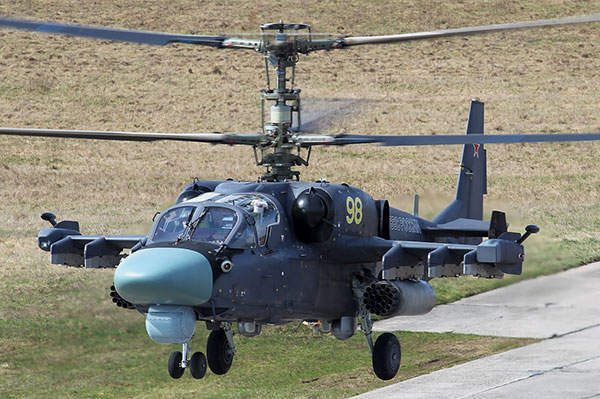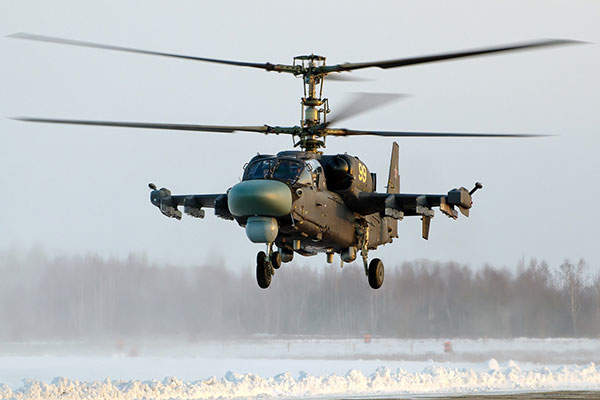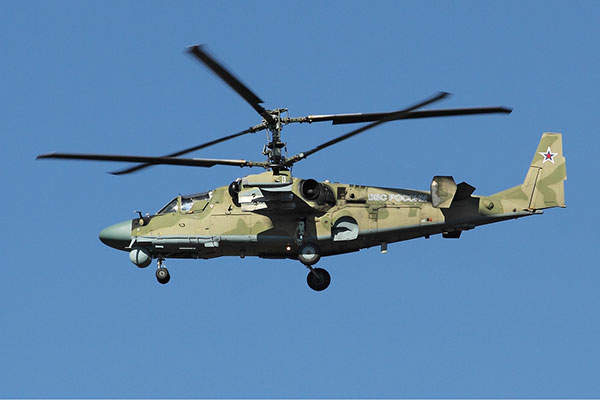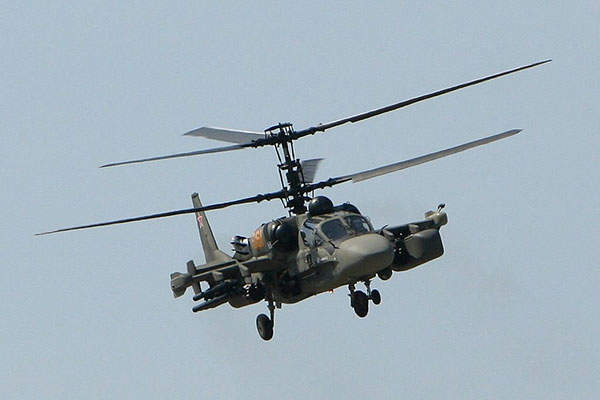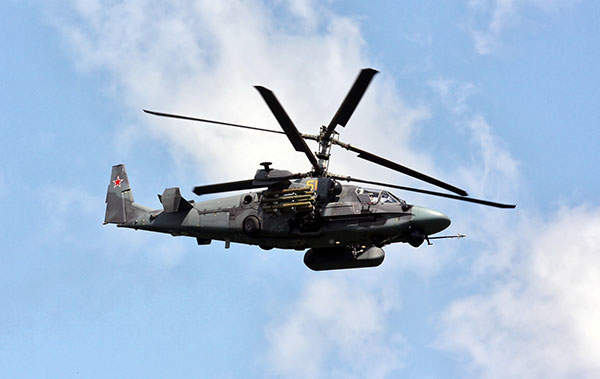Ka-52 Alligator is an all-weather attack helicopter operated by the Russian Air Force. Developed by Kamov Design Bureau (part of Russian Helicopters), Ka-52 is a twin-seat variant of the Ka-50 attack helicopter.
The Ka-52 is a highly manoeuvrable helicopter that can destroy enemy armoured and unarmoured ground targets, tanks, low-speed aerial targets and personnel at the frontline and in tactical depth. It is also deployed as a surveillance platform and aerial command post for a group of attack helicopters.
The first Ka-52 helicopter was rolled out in December 1996. The helicopter completed its first flight in June 1997. The serial production of Ka-52 began in 2008 at Progress Arsenyev Aviationplantin the Primorye region of Russia. Progress Arsenyev Aviation is a part of Rostec State Corporation.
Orders and deliveries of the Russian helicopter
In December 2010, the Russian Air Force’s 334th Tactical Deployment Centre in Torzhok received three Ka-52s. The twin-seat Ka-52 serves in the air force as a special mission helicopter.
The Russian Air Force began fielding Ka-52 helicopters in April 2011. In the same year, Russia’s defence ministry signed a contract with the company to procure 140 Ka-52 helicopters.. The Ka-52 replaced the Ka-50 Black Shark fleet that served the Russian Air Force in several military operations, including the Chechen wars.
In February 2018, the Russia’s defence ministry expressed interest in procuring 114 upgraded versions of Ka-52 attack helicopters as part of the new State Armament Programme for 2018–2027.
Ka-52 design, cockpit and avionics
Ka-52 incorporates a slightly modified design of the Ka-50 helicopter. The helicopter features a wider nose and an extended fuselage due to its twin-seat cockpit. The commonality of the airframe, components and systems of the two variants is about 85%.
The helicopter has a length of 16m, height of 4.9m and main rotor diameter of 14.5m. The maximum take-off weight of the Ka-52 is 10,800kg.
The twin-seat cockpit accommodates two crew members in side-by-side arrangement. Both the crew members are seated on identical K-37-800M ejection seats fitted with a catapult crew rescue system. The modern glass cockpit is equipped with a head-up-display (HUD), four SMD 66 multifunction displays, helmet-mounted sight display, image intensifiers and a GPS receiver. The helicopter also integrates a FAZOTRON cabin desk radio-locator and navigation and attack system for helicopters (NASH).
In September 2012 Russian Helicopters, a subsidiary of Oboronprom, signed a long-term contract with Ramenskoye Design Company (RDC) for deliveries of avionics equipment. As part of the contract, RDC was responsible for the supply of avionics packages for Ka-52 attack helicopter and Ka-52K advanced ship-based variant between 2013 and 2020.
Armaments on the attack helicopter
The Ka-52 helicopters have high combat survivability and powerful weaponry. The starboard side of the fuselage is fitted with a NPPU-80 movable gun mount installed with 2A42 30mm automatic gun. The six wing-mounted external hardpoints can be attached with different combinations of weapons.
The hardpoints can carry VIKHR anti-tank guided missiles (ATGM), ATAKA missiles with laser guidance system and B8V-20 rocket launchers for 80mm unguided S-8 rockets. VIKHR anti-tank missile has a range of eight to ten kilometres. The Ka-52s can also be armed with IGLA-V anti-aircraft guided missiles.
Further, the helicopter was equipped with the latest guided air-to-surface missile Izdeliye 305E (Product 305 E), which can strike a target at a distance of up to 14.5km with a speed of up to 230m/s. Russia fired the latest missiles from a Ka-52 Alligator attack helicopter during its military operation in Ukraine in 2022.
Sensors, radars and countermeasures
The Ka-52 helicopter is fitted with a mast-mounted radome housing a Phazotron FH-01 Millimeter Wave Radar (MMW) radar with two antennas for aerial and ground targets.
The countermeasures are supported by active IR and electronic jammers, radar warning receiver (RWR), laser detection system, IR missile approach warning sensor and UV-26 flare / chaff dispensers in wing-tip fairings.
Engines and performance of Russia’s Ka-52
The Ka-52 Alligator is powered by two Klimov VK-2500 turboshaft engines driving two coaxial contra-rotating main rotors. Each engine produces a maximum take-off power of 2,400hp. The engines are equipped with a new full authority digital control system (FADEC).
The Ka-52 military helicopter can fly at a maximum altitude of 5,500m. The maximum and cruise speeds of the helicopter are 300km/h and 260km/h respectively. The helicopter can climb at a maximum rate of 16m/s. The Ka-52 has a practical flight range of 460km, while its ferry flight range is 1,110km.

